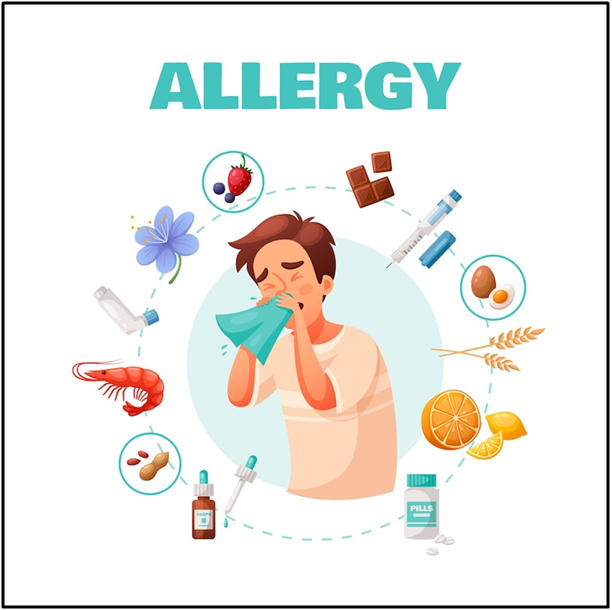Unlike popular belief, food allergies are much more common.
Given that the prevalence of these conditions is increasing, this is particularly true if you are not aware of the new data.
The prevalence of food allergies among children increased from 3.4% in 1997-1999 to 5.1% in 2009-2011, according to the CDC.
Currently, 8% of children are thought to be affected.
It’s also possible for new food allergies to develop even as adults, despite the fact that some reactions may lessen or even disappear over time.
However, it might be simpler than ever to pinpoint the reasons behind allergic reactions and prevent exposure.
More than 95% of food allergies in children are caused by one of these 9 allergens.
Due to this, we’ve put together a straightforward guide to help you comprehend these typical food allergens and the precautions you can take to reduce your risk.
The 09 Most Common Allergens
- Milk
Dairy products are widely available in supermarkets and eateries, making a milk allergy problematic.
Fortunately, there are many dairy-free alternatives to common items, many of which are derived from soy and almonds, thanks to increased public awareness about allergies.
- Eggs
People who are sensitive to the protein found in egg yolk or egg white have developed an allergy to eggs, making them another common food allergen.
Fortunately, egg substitutes are also offered, and most people outgrow their egg allergy by the age of 16.
- Wheat
Since it is present in foods you might not have thought of as allergens, such as ice cream, soy sauce, and hot dogs, wheat is one of the sneakier usual suspects.
Because of this, careful label reading is crucial.
- Soy
For young children with allergies, soy can present a special challenge because it is used in infant formulas.
Soy is another food ingredient that finds its way into processed foods like candy and meat products, similar to wheat.
- Peanuts
Anaphylaxis, among other extremely severe reactions, can occur in some people with peanut allergies.
This is the reason why “peanut-free” schools exist. Since peanuts are frequently used in cooking in addition to being used in many candies and baked goods, it is advisable to check with the restaurant if you are prone to severe reactions.
- Tree Nuts
The six tree nuts that are most frequently discussed when dealing with allergies are walnuts, almond, hazelnut, pecan, cashew, and pistachio, which should not be confused with peanuts, which are legumes.
A lot of people who are allergic to one tree nut are frequently allergic to another.
- Fish
Among the allergies that can appear later in life is a fish allergy.
The biological makeup of finned fish and shellfish differs, so a person with a tuna allergy may not also have a lobster allergy.
- Seafood
Allergies to shellfish frequently start in adulthood. Furthermore, not all shellfish may cause an allergic reaction in a person with a shellfish allergy.
While oysters, clams, and scallops, for example, can be eaten, lobster, shrimp, and crab may need to be avoided.
- Sesame
Sesame has recently been added to the list of top food allergens due to the rise in allergy cases.
The Food Allergy Safety, Treatment, Education and Research Act of 2021 mandates that, starting in 2023, all sesame must be labelled on packaged foods.
What are some strategies for preventing food allergens?
Read Food Labels “We advise very careful label reading for patients with food allergies and/or their parents,”
When a food product contains one of the eight allergens listed above, the FDA mandates that businesses label it clearly (with sesame to be added starting in 2023).
It clearly spells out the names of these allergens in parentheses, or it says “Contains peanuts” or “Contains tree nuts.” Very simple language is used.
Therefore, it’s crucial that we read labels carefully. By doing so, you can guarantee your safety when making purchases at the store.
Conclusion
Perhaps you’ve never had a food allergy officially identified, but you notice that fruits and vegetables make your mouth feel dry and scratchy. If so, you may locate our Food allergy test in Amritsar.


